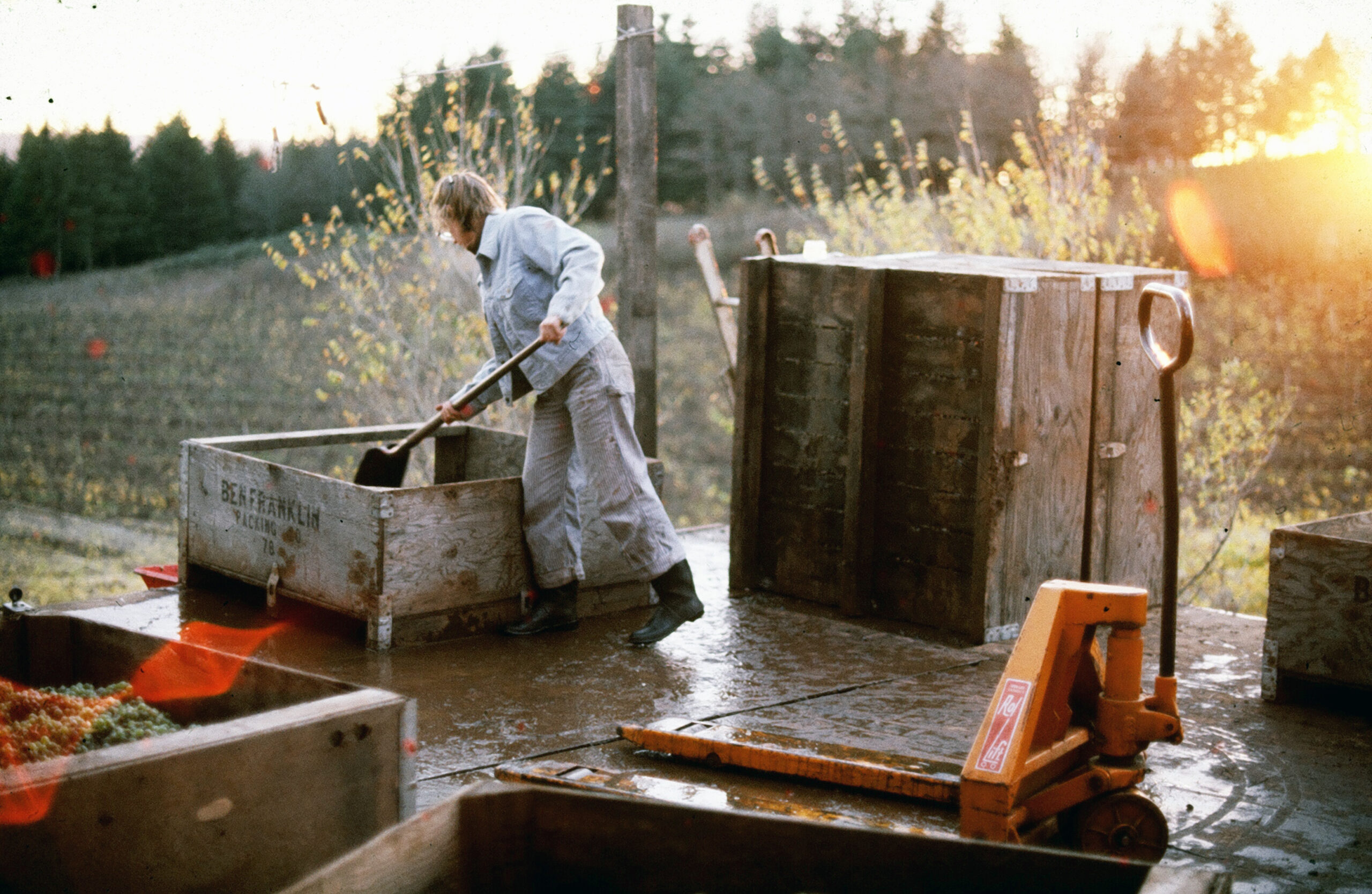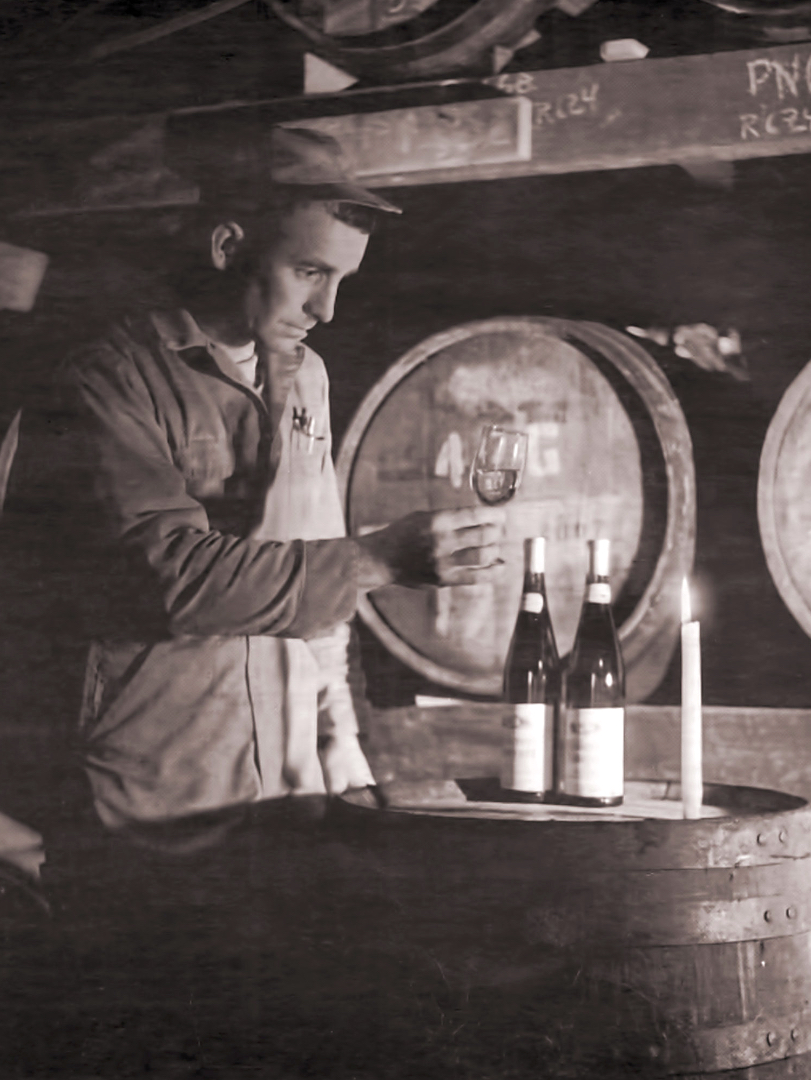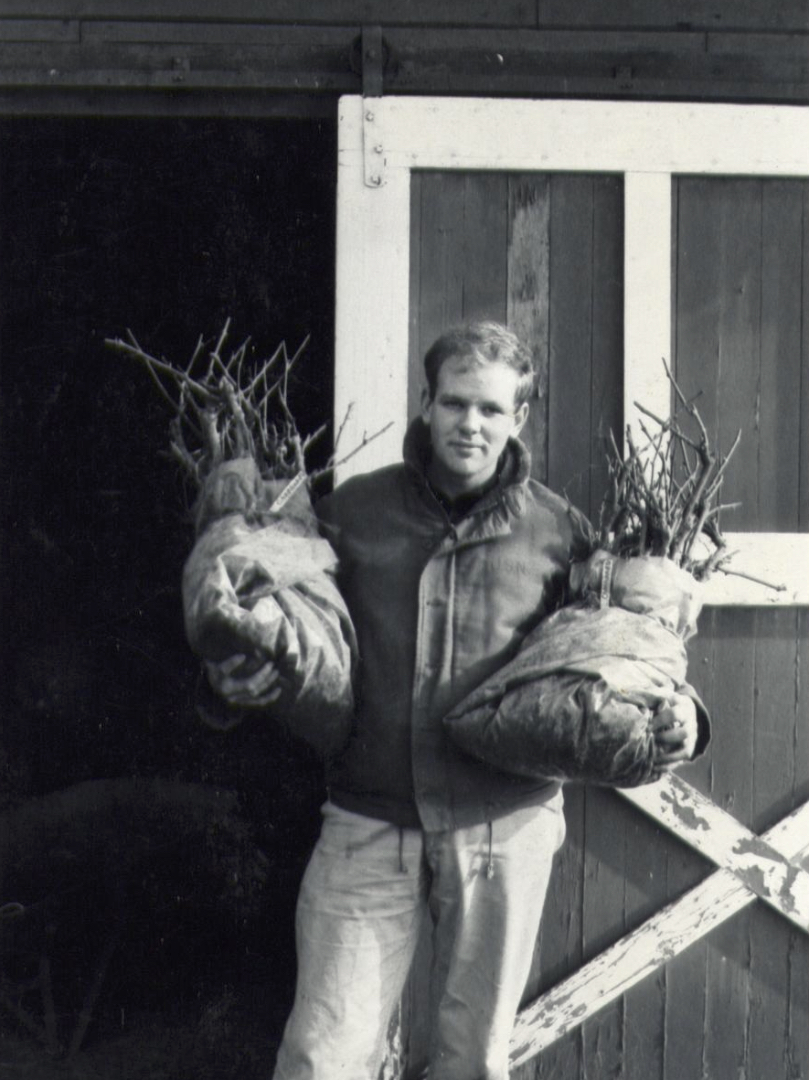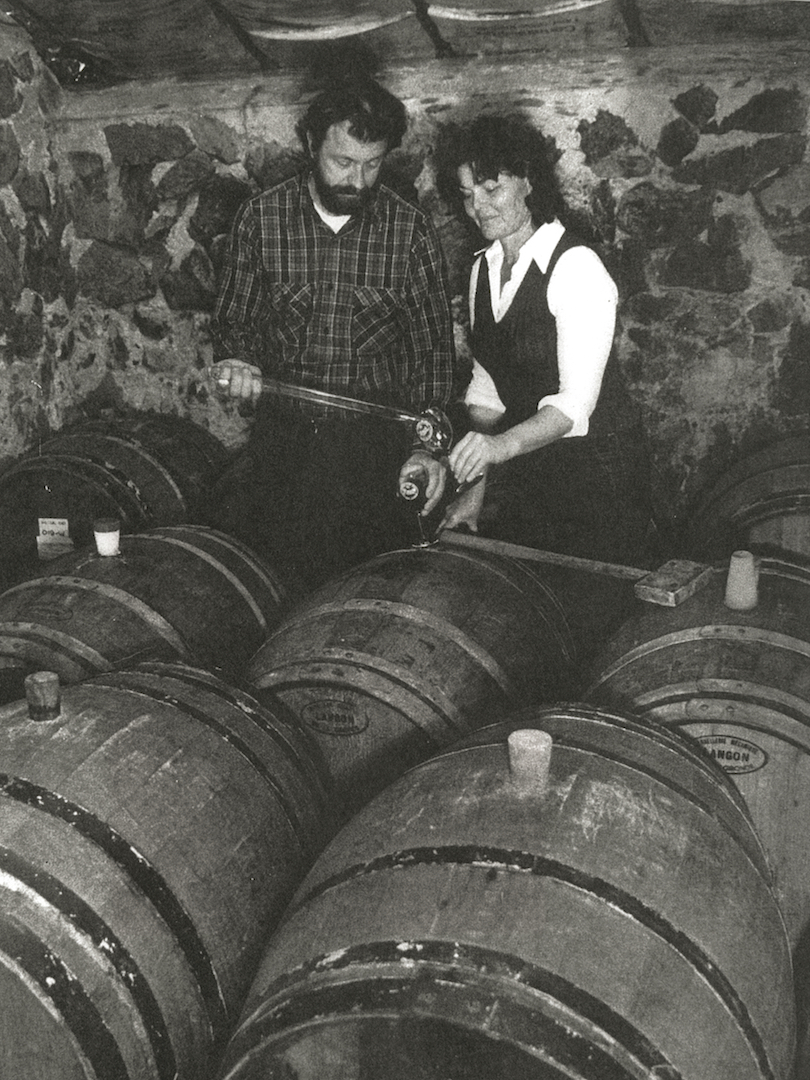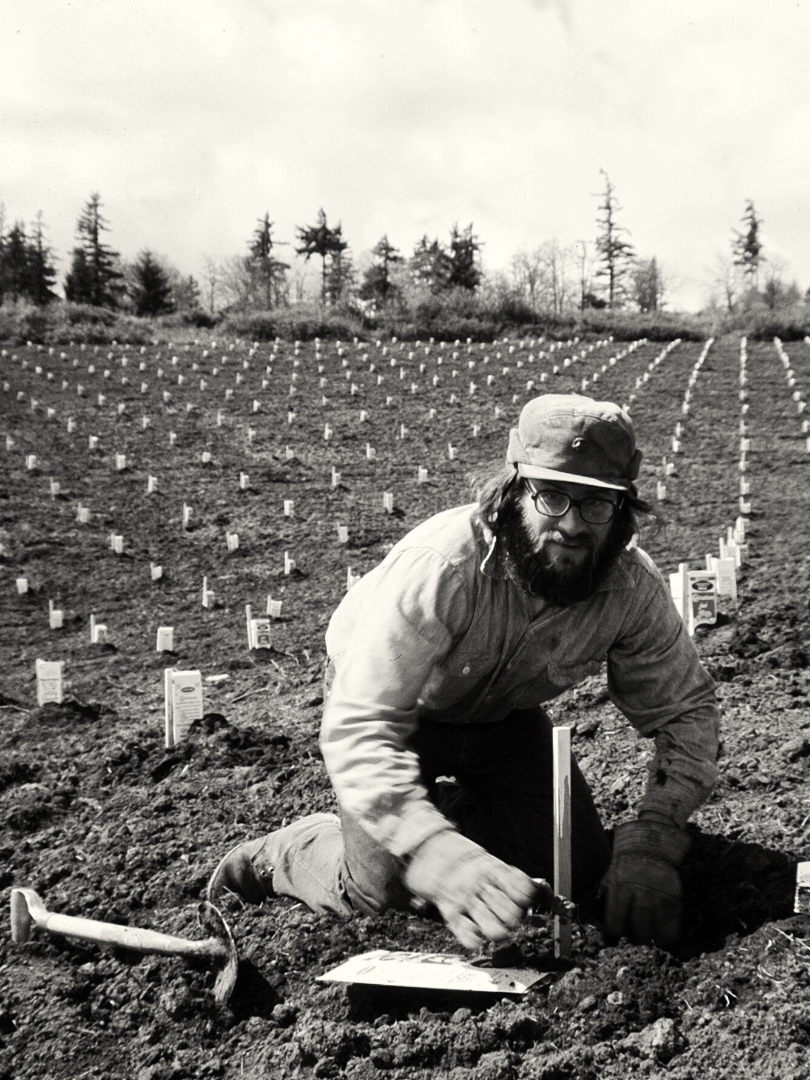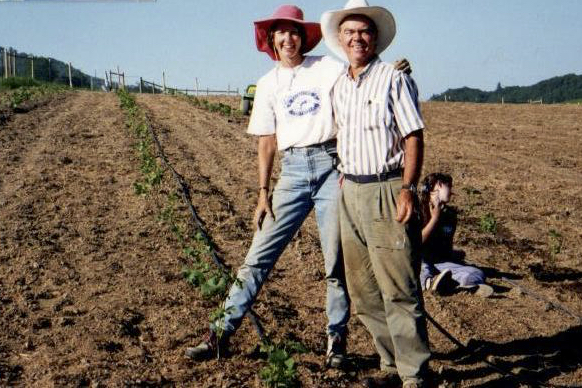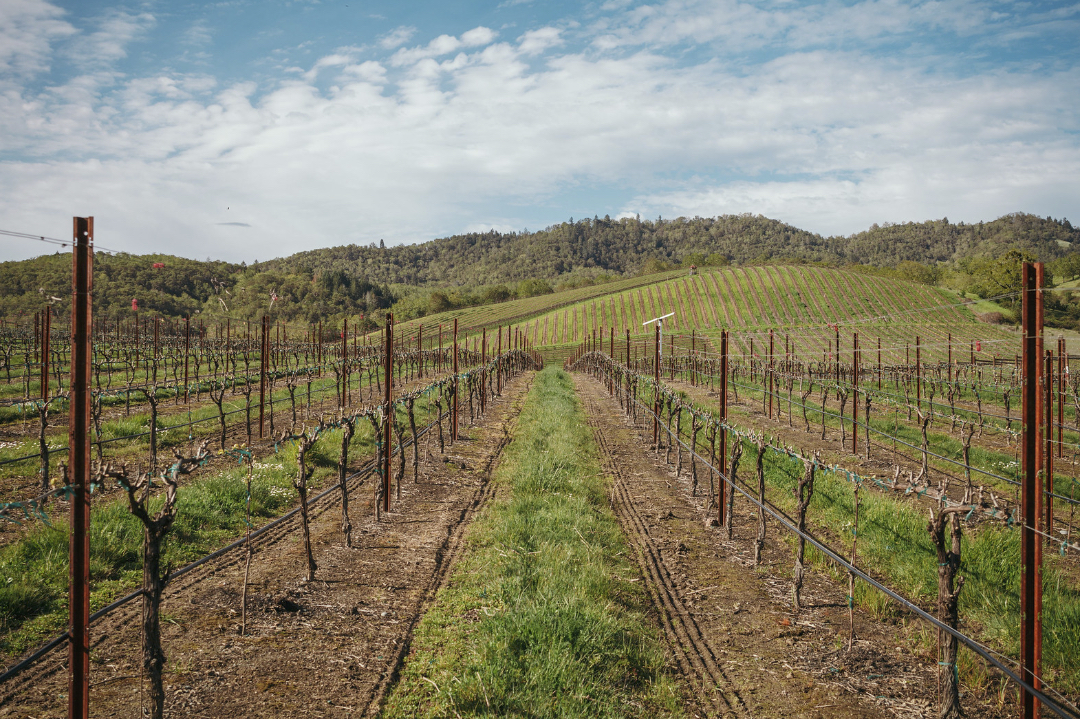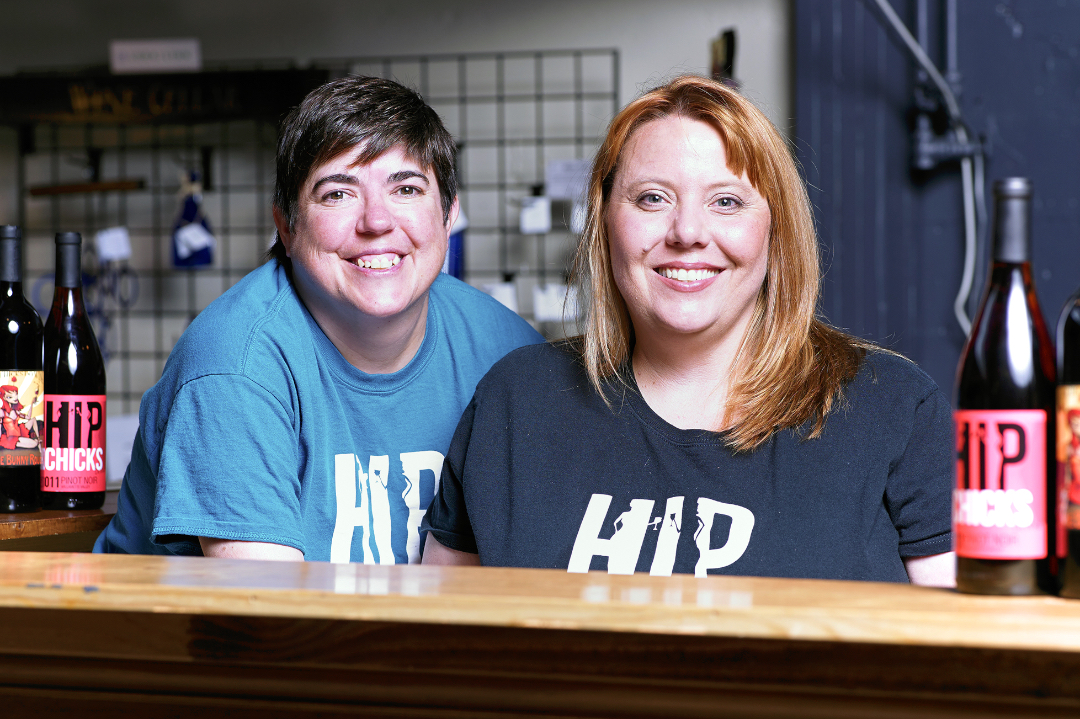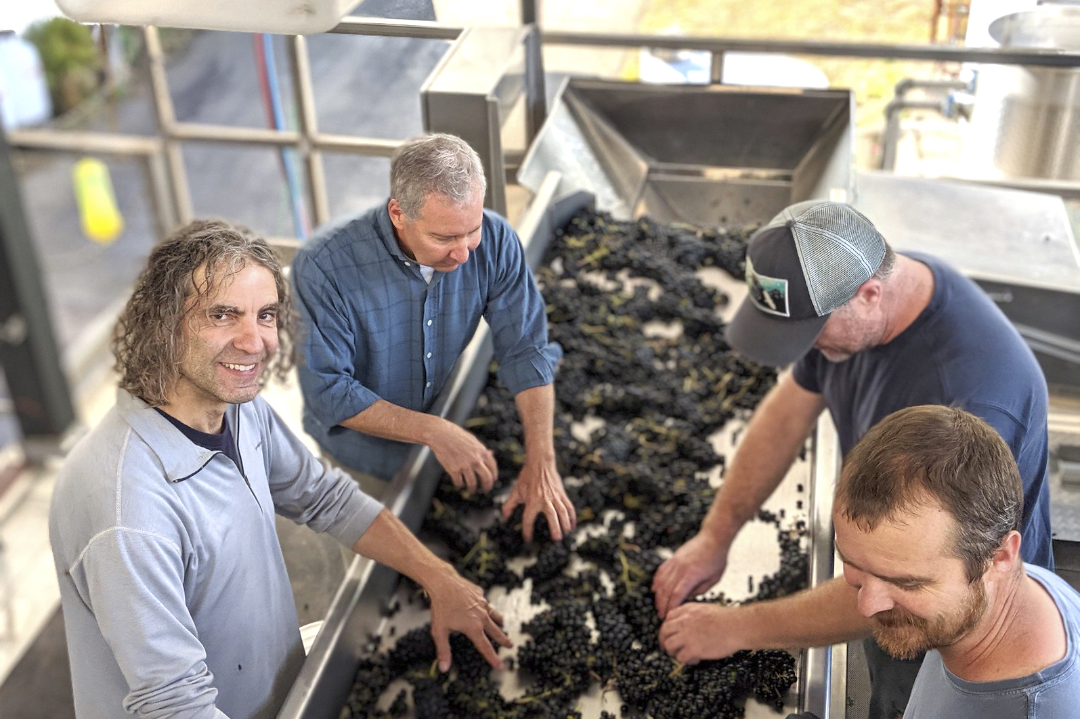Oregonians were growing and fermenting grapes before we achieved statehood. But our current reputation as one of the world’s top producers of high-quality wine has been built over the past five decades.
Jump to: 1847 | 1960 | 1980 | 2000
Beginnings 1847-1960
1847: Oregon Trail pioneer Henderson Luelling and his family bring several dozen varities of fruit plantings from Iowa to the Oregon Territory, including Oregon’s first grape plantings.
1852: Peter Britt, a Swiss immigrant who has come to be know as the “father of the Southern Oregon fruit industry,” establishes the Northwest’s first winery, Valley View, in Jacksonville.
1859: Oregon becomes the 33rd U.S. state.
1889: Adam Doerner, a German immigrant with winemaking experience, planted grapes on his farm located in the Melrose area of the Umpqua Valley. He grew Zinfandel, Riesling, and a Sauvignon varietal making wine and brandy until prohibition. He also tended a fruit orchard, planted hay, and raised livestock. Today, the fruitful vineyard remains in the family and is tended by Christina Doerner, a fifth generation farmer.
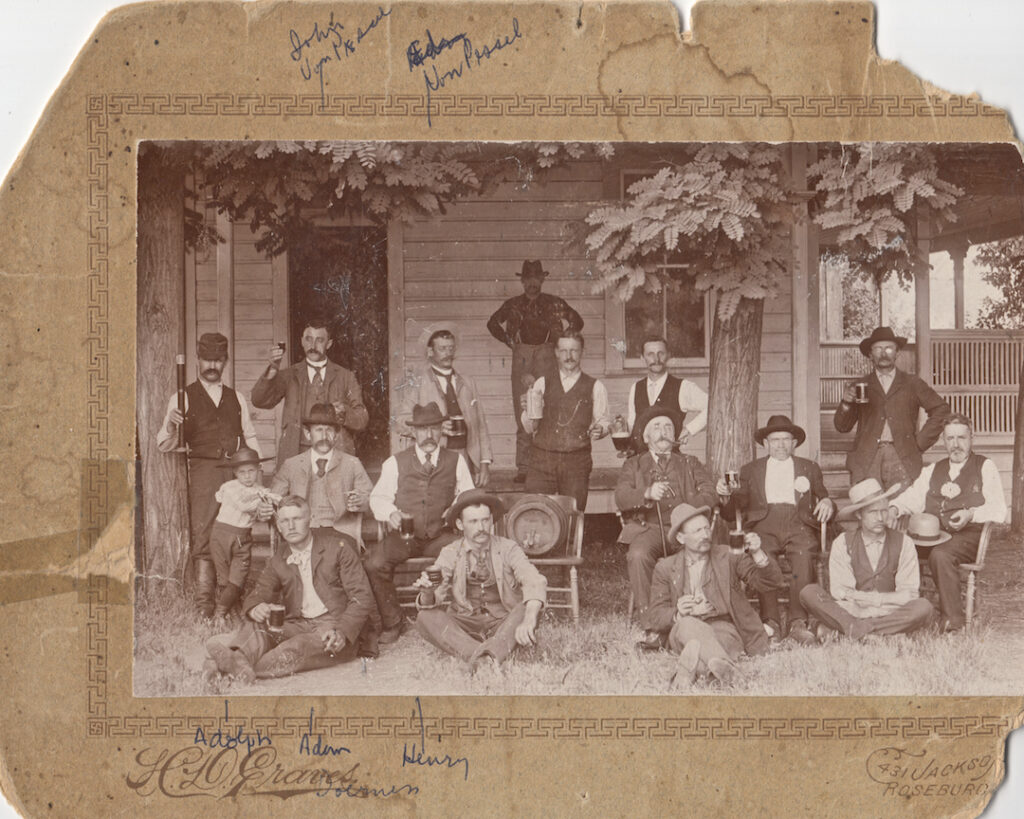
Doerner family c. 1895 courtesy Oregon Wine History Archive
1904: Forest Grove winemaker Ernest Reuter wins silver for his Riesling at the 1904 St. Louis World’s Fair, the first award given to an Oregon winemaker.
1916-1933: Zealous Oregon voters pass Prohibition four years before it takes effect nationally.
1933: John Wood and Ron Honeyman of Salem were among a group of early Oregon entrepreneurs who received bonded winery status shortly after the repeal of the 18th Amendment to the U.S. Constitution which established Prohibition in 1920. Honeywood Winery is Oregon’s oldest continuously operating winery and holds bonded winery number 26.
The Founders 1960-1980
1961: After a long dry spell following Prohibition, Richard Sommer launches Oregon’s modern era of winegrowing when he plants Riesling, Gewürztraminer, Chardonnay, Semillon, Sauvignon blanc, Cabernet Sauvignon, Pinot noir, Malbec, and Zinfandel at his HillCrest Vineyard in the Umpqua Valley. HillCrest, which holds bonded winery certificate number 42, is Oregon’s oldest estate winery.
1964: Food writer and Portland native James Beard places Oregon on the culinary map with the publication of his memoir, Delights & Prejudices: A Memoir with Recipes.
Richard Sommer (L), David Lett (R)
Lett and Coury had been told the rain would wash them out, they would grow fungus between their toes, it would rot their clothes off, and there was no way in hell they would be able to grow great grapes up here.
Myron Redford, Amity Vineyards
1965: The Pinot noir era dates from February 1965. David Lett first rooted Pinot noir cuttings near Corvallis, while researching a permanent vineyard site, the first plantings in the Willamette Valley. Charles and Shirley Coury, fresh from U.C. Davis and a year in Alsace, arrived in March and planted their first vines in the nursery established by Lett and returned to California, leaving the vines in the care of Lett.
Later, David and his wife Diana spent their honeymoon moving the young vines from the nursery to The Eyrie Vineyards in the Dundee Hills. He was convinced the Burgundian varieties could be grown better in Oregon than in California.
The Courys returned later in the year and eventually purchased a Forest Grove property that had operated a vineyard and winery from the mid-1800s through Prohibition. They began to replant it with Pinot noir and Riesling. That property is now known by its historic name, David Hill.
1967: Richard Sommer harvests his “first crop of any consequence,” resulting in 6,000 gallons of juice. He decides to quit his day job to make wine full-time, and bottles Oregon’s first ever vintage of Pinot noir.
1968: Another U.C. Davis grad, Dick Erath, arrives in the Willamette Valley and prints up business cards in anticipation of planting his first wine grapes in 1969.
Dick & Nancy Ponzi (L), David Adelsheim (R)
1969: Dick and Nancy Ponzi arrive in Oregon and begin planting their first 20-acre vineyard. (Later, Nancy will co-found ¡Salud! and other organizations, and the couple will launch BridgePort Brewing Company and the Dundee Bistro).
The same year, Jim and Loie Maresh begin planting grapevines on the now-famous Maresh Red Hills Vineyard.
1970: Susan Sokol Blosser and Bill Blosser buy an abandoned prune orchard in Dundee, two weeks before their first child is born, and begin clearing the land so they can plant grapevines.

The Sokol Blosser family
1971: David and Ginny Adelsheim purchase their original property at Quarter Mile Lane in Newberg and prepare to plant Pinot noir, Chardonnay, Pinot gris and Riesling.
Cal and Julia Lee Knudsen purchase 200 acres in the Dundee Hills and plant Pinot noir, Chardonnay, and Riesling. The same year Philippe and Bonnie Girardet begin planting their Umpqua Valley estate.
1972: The Wisnovsky family decides to revive pioneer Peter Britt’s 1850s-era winery and vineyard, Valley View, in Southern Oregon’s Applegate Valley. Sons Mark and Michael are conscripted as vineyard crew.
The same year, Dick Troon plants his vineyard nearby, on the Applegate Valley’s Kubli Bench.
1973: With the establishment of the Oregon Department of Land Conservation and Development, a group led by David Adelsheim and David Lett creates maps designating the prime vineyard zones of the northern Willamette Valley, then lobbies to protect this land resulting in Oregon Senate Bill 100. Until now, farmers have fought land developers on a case-by-case basis.
Tualatin Estate Vineyard, established in 1973 by wine pioneers Bill Fuller and Bill Malkmus, is one of the oldest and most respected vineyard sites in Oregon’s Willamette Valley. Tualatin is the only vineyard to have won Best of Show for both red and white wines at the London International Wine Competition in the same year, and the only Oregon winery to capture the Governor’s Trophy, Oregon’s most prestigious wine award, in two consecutive years (1994-1995).
1974: David Adelsheim travels to Burgundy to work harvest and realizes that the grapevine clones there perform better in the cool Burgundian climate than the “Davis” clones from California perform here in Oregon. It will take him a decade, but with the help of David Heatherbell, Professor of Enology at Oregon State University, Adelsheim is able to import Dijon clones from Burgundy beginning in 1984.
1975: The same year, Cal Knudsen and Dick Erath form Knudsen-Erath Winery and operate Bonded Winery No. 52, the first commercial winery in the Dundee Hills.
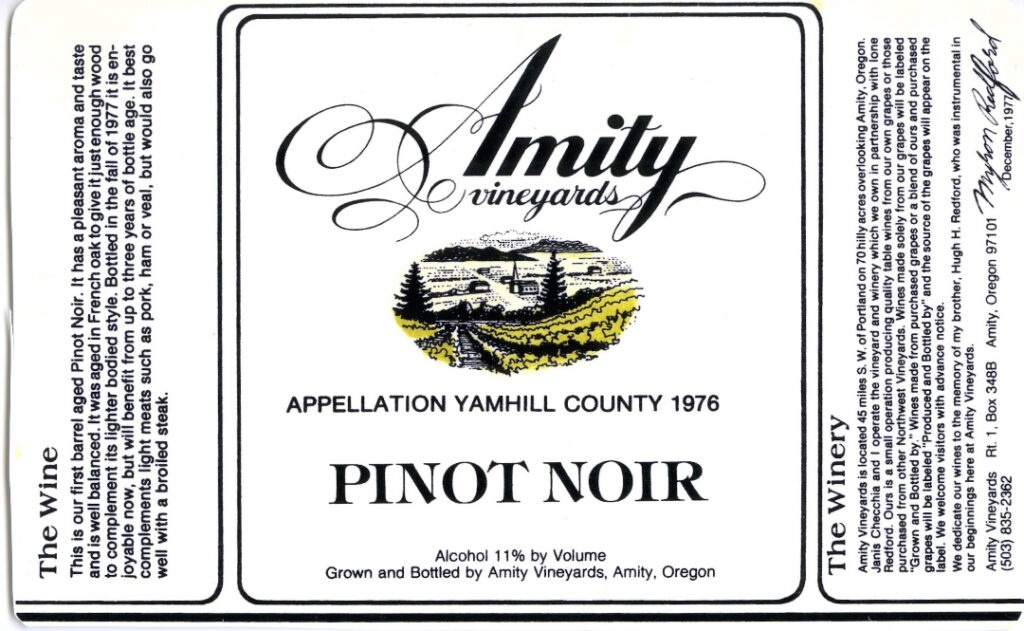
1976: Myron Redford builds his winery at Amity Vineyards and makes his first wine, a “Pinot Noir Nouveau.”
1977: The Campbell family ferments the first vintage of grapes from their Elk Cove Vineyards, planted three years prior, in Gaston; and the Casteel family begins to plant Bethel Heights Vineyard in Salem. Meanwhile, in McMinnville, Nick’s Italian Café opens.
Oregon’s winemakers join together to propose the strictest wine labeling laws in the country.
1978: In Grants Pass, Ted and Mary Warrick plant grapevines on their property overlooking the Applegate River, establishing Wooldridge Creek Vineyard.
1979: The Eyrie Vineyards 1975 South Block Reserve Pinot Noir places in the top 10 in a blind tasting at the Gault-Millau Wine Olympiad in Paris.
1980: Seven Hills Vineyard is founded on the Oregon side of the Walla Walla Valley.
1980: David Adelsheim, Dick Erath, and David Lett petition the state department of agriculture to establish a wine commission.
The inaugural Steamboat Conference takes place. Held in the Umpqua Valley, the conference is an unprecedented gathering of winemakers to share techniques, tastings, and criticism. Steamboat remains an annual tradition and celebration of Oregon’s collaborative spirit.
Persistence 1980-2000
1981: After a year of driving a tractor around the decade-old Knudsen Vineyard, Allen Holstein realizes he can’t go back to his PhD program at OSU. Three decades later, Holstein is still farming Knudsen Vineyard, as vineyard manager at Argyle.
1982: Alarmed by the rapidly declining quality of the fruit at his decade-old Henry Estate Vineyard, Umpqua Valley vintner H. Scott Henry designs a unique four-pronged trellising system that exposes the grape bunches to maximum sunlight. The “Scott Henry Trellis System” is soon adopted by vineyards all over the world.
Lonnie Wright purchases and revives The Pines, a century-old Zinfandel vineyard on the Oregon side of the Columbia Gorge, sparking a rebirth in winegrowing in that region.
1983: The Willamette Valley AVA is established, becoming Oregon’s first AVA.
Nine vintners get together, form the Yamhill County Wineries Association, and decide to throw open their winery doors for the first, “Thanksgiving Weekend in Wine Country.”
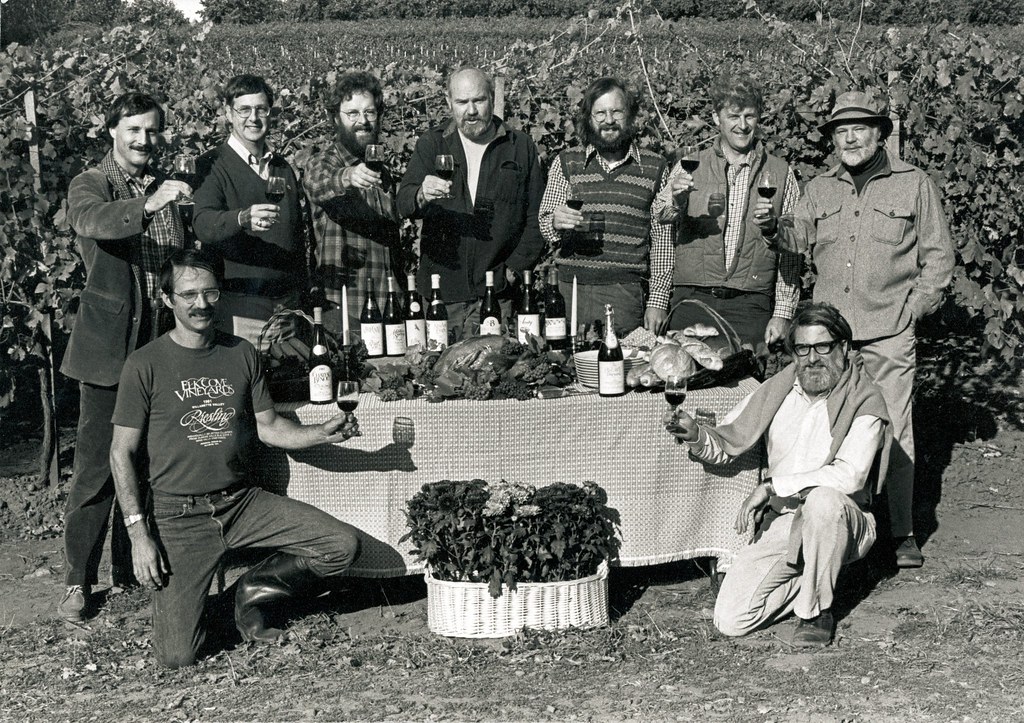
Thanksgiving in Wine Country 1983
1984: Relentlessly wet, cold, muddy and late, this is, by all accounts, the worst harvest season in Oregon Wine history. On a more positive note, Cameron Winery is established this year; and the Oregon Wine Advisory Board, now Oregon Wine Board, begins funding enology research through Oregon State University.
The Umpqua Valley, Columbia Valley, and Walla Walla Valley AVAs are all established.
1985: At a tasting at the International Wine Center in New York, a group of oeno-experts cannot distinguish Oregon Pinot noirs from Burgundies costing more than twice as much. They choose Oregon Wines as their top three favorites.
1986: A winemaker named Ken Wright starts up a boutique winery in McMinnville that specializes in vineyard-designate bottlings. He calls it Panther Creek Cellars. Later, Wright will sell Panther Creek and establish Ken Wright Cellars and Tyrus Evan in Carlton.
1987: The first International Pinot Noir Celebration takes place in McMinnville, gathering Pinot noir producers and lovers from all over the world.
1988: Burgundy-born and -educated Véronique Drouhin makes her first vintage of Willamette Valley wine for the newly minted Domaine Drouhin Oregon label. The investment by Véronique’s family company, Maison Joseph Drouhin, in Dayton vineyard land and a new winery, places an international spotlight on Oregon. Meanwhile, an Oregon Wine cellar is installed in the governor’s mansion.
1989: The state’s only shareholder-owned and publicly traded winery, Willamette Valley Vineyards, opens in Turner.
Oregon has been a wonderful example of what an industry can do to make a living, increase the prestige of the state, bring money into the state, and keep the land healthy at the same time.
Nancy Ponzi
1989: Seven Hills Winery becomes the first to operate on the Oregon side of the Walla Walla Valley.
1990: The dreaded vine-root louse, phylloxera, appears in the Willamette Valley, forcing vineyard owners to rip out vines and replant on grafted phylloxera-resistant rootstock. The process is expensive, labor-intensive, and heartbreaking.
1991: The Rogue Valley AVA is established.
Eighteen Oregon wineries join forces to plan a charity auction modeled on the Hospices de Beaune, the annual barrel sale in Burgundy that is said to be the oldest charity auction in the world. ¡Salud! raises funds to provide free, in-the-vineyard healthcare to migrant laborers, the only program in the nation of this kind.
1992: Construction of King Estate winery is underway. A decade later, in 2002, the vast property will achieve organic certification. Only in Oregon would the state’s largest winery farm all of its vineyards organically.
1993: Renovations of the former Multnomah County Poor Farm are complete and McMenamins Edgefield opens its 100 guest rooms to overnight guests. Visitors to the sprawling Troutdale resort can watch winemaking, brewing, and distillation happening on-site while enjoying house-made wines, beers, and spirits.
1994: Harry Peterson-Nedry, Judy Nedry, and Bill and Cathy Stoller open Chehalem winery in Newberg. In a then-unusual move, the partners bring in a consulting winemaker from Burgundy, Patrice Rion, to assist with the startup. Their original fruit source is Ridgecrest Vineyard, planted by Peterson-Nedry in 1982.
1995: Earl and Hilda Jones plant the first Tempranillo vines in the Pacific Northwest at Abacela winery in Roseburg. Their Iberian varietals go on to win international acclaim.
Earl and Hilda Jones planting Abacela in 1995 (L), Abacela today (R)
1996: Sokol Blosser is the first winery to achieve the Salmon-Safe sustainable farming designation.
1997: Ted Casteel of Bethel Heights leads a group of vineyards to form LIVE (Low Input Viticulture and Enology), a wine-grape specific eco-designation.
1999: Bill Holloran more or less launches the “garagiste” movement in Oregon when he converts his West Linn horse barn into a winery, blurring the lines between suburban and rural; he hires Jay Somers (formerly J. Christopher, today J.C. Somers Vintner) as winemaker.
The same year, another suburban winery – Cooper Mountain Vineyards in Beaverton – is the first in the state to achieve Demeter-Certified Biodynamic status.
Contemporaries 2000-today
2000: The Applegate Valley AVA is established.
2001: The Portland urban scene is born when Renee Nealy and Laurie Lewis launch Hip Chicks Do Wine in an old warehouse.
2002: The winemaking business reinvents itself, twice. When the eco-built Carlton Winemakers Studio debuts, it’s the first multiple-winery facility in the state. And the arrival of A to Z Wineworks takes the negociant model–purchasing finished wine in bulk and creating value-oriented blends–all the way to the bank, quickly growing to be Oregon’s largest winery.
Laurie Lewis & Renee Nealy of Hip Chicks Do Wine (L), Carlton Winemakers Studio courtesy Anthony King (R)
2003: Another new business model: Laurent Montalieu and his partners take the “custom crush” business from vineyard to bottle with the new NW Wine Company in McMinnville, which will source, farm, crush, and vinify fruit for you, then bottle and label it, too.
2004: The Columbia Gorge and Southern Oregon AVAs are established. In the Willamette Valley, the Dundee Hills and Yamhill-Carlton AVAs are established.
The release of the film Sideways sparks Pinot mania.
2005: The McMinnville and Ribbon Ridge AVAs in the Willamette Valley, and the Red Hill Douglas County AVA in the Umpqua Valley are established. At the time, Ribbon Ridge was the smallest AVA in America.
2006: The Chehalem Mountains and Eola-Amity Hills AVAs are established.
The Wine and Spirit Archive opens its doors, offering WSET (Wine and Spirit Education Trust) accreditation and joining the International Sommelier Guild in establishing Portland as a center of wine education on the west coast.
2007: The Snake River Valley AVA across the Oregon / Idaho border is established.
Celebrity chefs are so yesterday. A series of “Dueling Sommelier” dinners held in Portland this year calls attention to the rising prominence of somms. Also, Riedel rolls out its first region-specific design ever: the “Oregon Pinot Noir Glass.” Local tasting rooms begin to sell the glass version, stamped with their winery logos.
2008: Bertony Faustin establishes Abbey Creek Vineyard in Portland’s west hills, Oregon’s first Black-owned and operated winery.
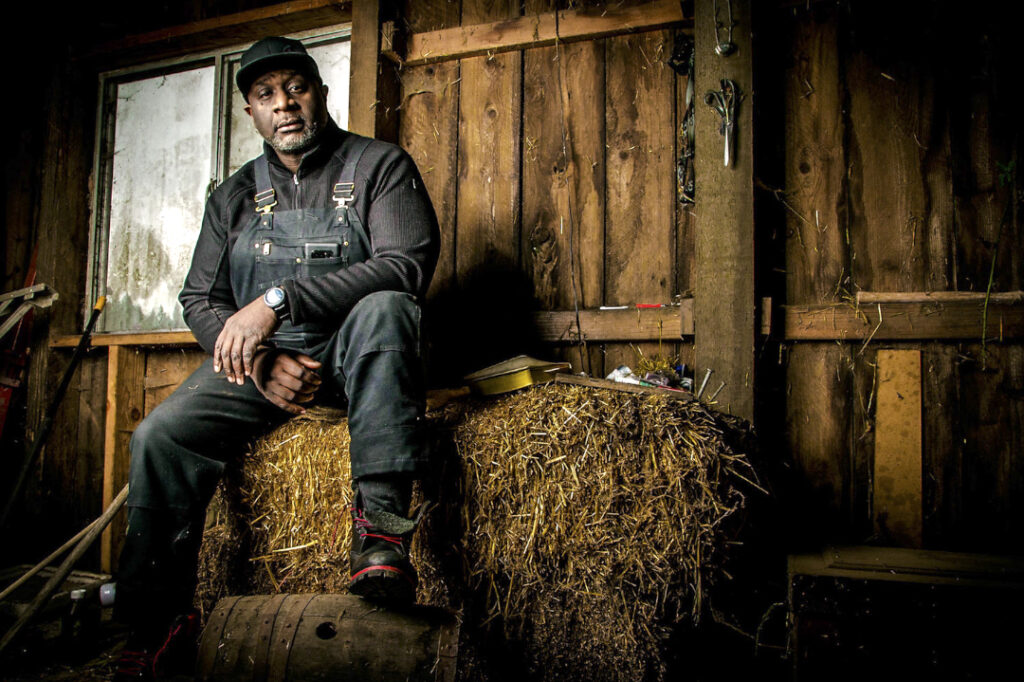
Bertony Faustin by Chad Brown
2009: Fourteen wineries–representing approximately 20 percent of Oregon wine production–join forces with the Oregon Environmental Council to kick off the Carbon Neutral Challenge, the first wine-industry carbon-reduction program in the United States. Solar panels begin to pop up all over wine country.
And Willamette Valley Vineyards co-founds what is said to be the world’s first cork recycling program, entitled Cork ReHarvest.
British wine magazine Decanter adds Southern Oregon University geologist Greg Jones, an international expert in vineyard climatology, to its “Power List” of the 50 most influential people in the world of wine.
2011: In Portland, a new group, PDX Urban Wineries, forms; it’s an indicator of the fast growth of the boutique urban winemaking trend.
And in McMinnville, Linfield College publishes the Oregon Wine History Project, a collection of interviews, documents, exhibits, and photographs archived online for the public to browse and for scholars and reporters to refer to.
2012: In January, Gov. John Kitzhaber proclaimed May Oregon Wine Month, reviving a tradition that had been dormant for more than two decades.
In May, the first-in-the-nation Oregon Wine Country license plate was made available by the Oregon Department of Motor Vehicles.
In November, Wine Spectator devoted its cover to Oregon, proclaiming Oregon the home of American Pinot noir and marking Oregon’s first cover story.
2013: Elkton Oregon became the state’s newest AVA. The new Elkton Oregon AVA is entirely contained within the Umpqua Valley AVA, which is entirely within the Southern Oregon AVA. Oregon has a total of 17 AVAs.
2014: A to Z becomes the first B Corp certified winery in the world.
2015: The Rocks District of Milton-Freewater AVA is established.
50 years since first Pinot planting.
Oregon’s modern winemaking era recently passed the half century mark, and it’s really just in the past two decades that industry growth has accelerated… Oregon’s grape growers and vintners have accomplished near miracles in a very short time.
Paul Gregut, Wine Enthusiast
2016: The Willamette Valley AVA expands its southern border approximately five miles to the south, notably including the King Estate vineyards.
2019: The Van Duzer Corridor AVA receives federal approval, making it the first new Willamette Valley AVA since 2006. The AVA is named after the Van Duzer Corridor, a natural break in the Coast Range that results in 40-50% stronger winds in the afternoon compared to other Willamette Valley AVAs. Direct coastal wind exposure results in cooler average temperatures and higher grape skin-to-pulp ratios, producing wines with more phenolic structure, densely structured tannins, and firm acids.
2020: Two new nested AVAs are approved in the north Willamette Valley: Tualatin Hills in the northwest corner, and Laurelwood District subdividing the Chehalem Mountains AVA. Based around the distinctive loess soil series of Laurelwood and encompassing some of the oldest vineyards in the north Willamette Valley, the soils of these AVAs impart a distinctive chalky and gravelly texture to the wines.
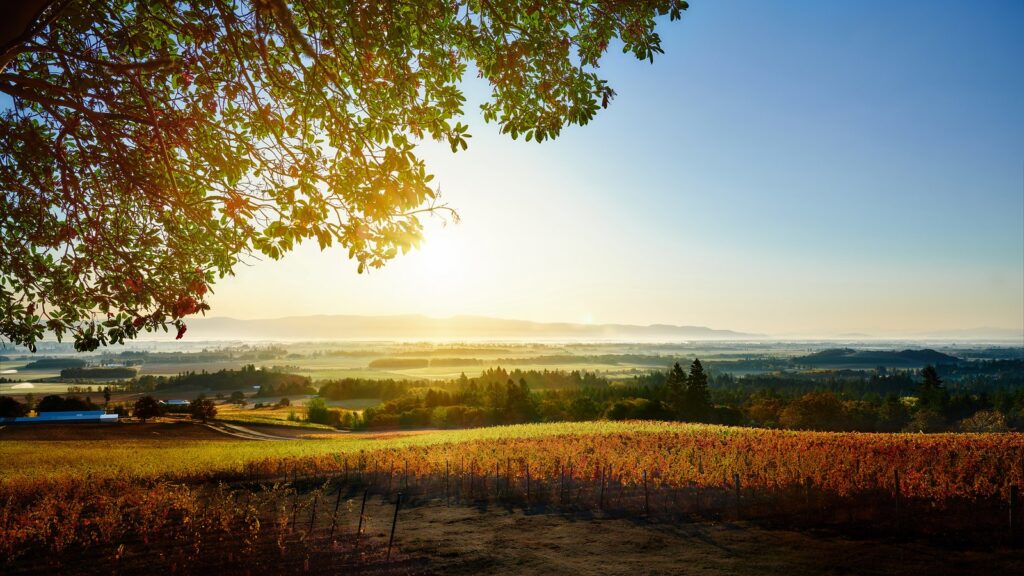
Benton-Lane Winery in the Lower Long Tom AVA
2021: Lower Long Tom, the newest appellation in Oregon, received federal recognition as Oregon’s 22nd American Viticultural Area (AVA). Drawn to reflect distinct soil, topography, and climate attributes, Lower Long Tom is the first in the Southern Willamette Valley.
The Willamette Valley AVA became only the second American wine region to receive Protected Geographical Indication (PGI) Status in the European Union. The PGI system protects iconic names of agricultural products, spirit drinks, and wines with a link to their geographical origin, including well-known products such as Champagne and Barolo. Only two American wine regions, Napa Valley and now the Willamette Valley, carry this distinction
2022: Today, Oregon is home to 995 wineries and 1,370 vineyards together working just under 40,000 planted acres (16,000 ha). Mount Pisgah, Polk County, Oregon – the state’s 23rd AVA – is officially established.
2023: Who knows, but we’ll see you there.
Editors Note: Some of this content was made available to the Oregon Wine Board with the permission of its author, Katherine Cole and The Oregonian, and may not be reused for any other purposes without the expressed written permission of the author.
Historical photos provided by the Oregon Wine History Archive at Linfield University.
